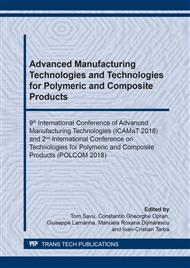p.5
p.15
p.23
p.33
p.43
p.53
p.63
p.71
Rail Damper Functionality-Modelling and Experimental Determinations
Abstract:
Rail traffic is a significant source of noise pollution for inhabited areas near the railway lines, especially because of the rolling noise generated by the trains. One of the solutions to mitigate the rolling noise emerged from trains that is increasingly being applied lately is the use of rail dampers. These rail dampers are mechanical devices designed to attenuate the propagation of bending waves along the rail from the contact areas with the vehicles wheels, thus reducing the level of rail vibration and, consequently, the noise level produced by it. Most of the rail dampers include steel plates encapsulated in rubber, working as dynamic vibration absorbers with two tuned frequencies. In this paper, an experimental demonstrative rail damper which combines the visco-elastic features of the rubber and of a thin film of oil is presented as a new solution in this field. The functionality of this kind of rail damper is investigated by experimental means and the results are shown and analysed. Also, the mechanical model associate to the functional verification procedure is presented and used to determine the visco-elastic features of the rail damper.
Info:
Periodical:
Pages:
23-32
Citation:
Online since:
June 2019
Authors:
Keywords:
Price:
Сopyright:
© 2019 Trans Tech Publications Ltd. All Rights Reserved
Share:
Citation:


